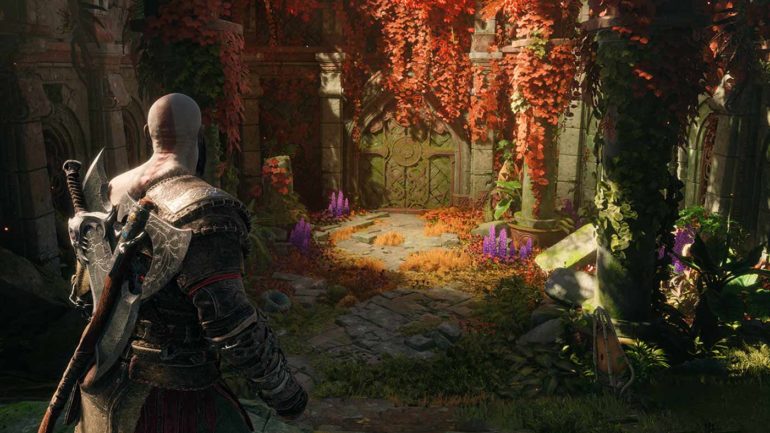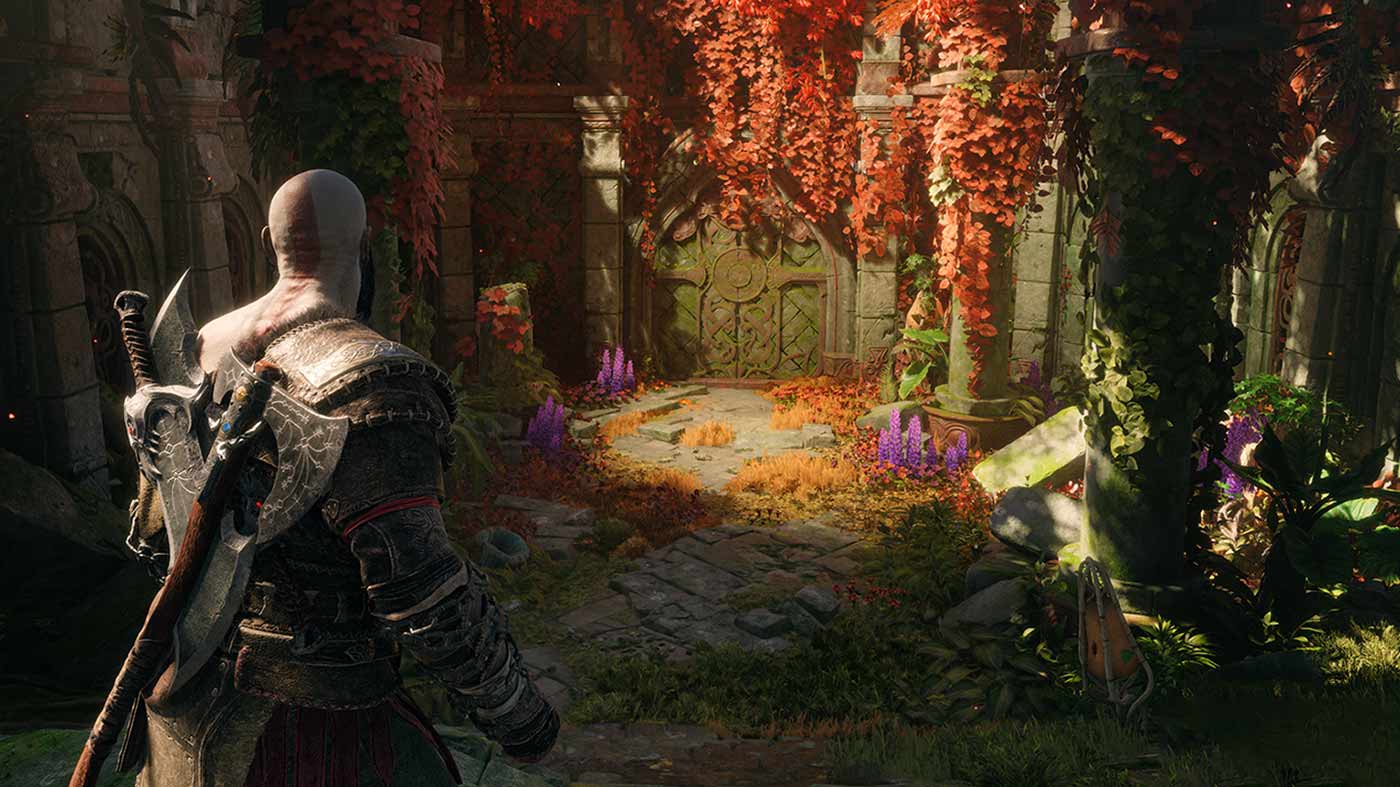In the interest of helping along anyone hoping to avoid even the most mundane of spoilers or simply here to glance at a review score in an effort to reconcile an expensive collector’s edition pre-order, I’m going to say this upfront – God of War Ragnarök is the best game of its kind that I’ve played since, well, the last one. After the significant shake-up of the series’ formula in the 2018 soft reboot it’s easy to understand a degree of hesitancy around a follow-up largely built on the same foundations. What’s important to remember though, is how good those foundations are and how much talent lives within the walls of Santa Monica Studio.
THE CHEAPEST COPY: $95 WITH FREE SHIPPING FROM AMAZON
But when it comes to the end of everything as we know it, there’s no better place to start than the beginning. God of War Ragnarök picks up some years after the end of God of War 2018 and sees the godly father-son duo of Kratos and Atreus staring down the barrel of the apocalypse after receiving the world-shattering news that (here come some spoilers for the end of that game) Atreus is, in fact, the Norse god, Loki. With the titular Ragnarök approaching, and the nine realms plunged into ‘Fimbulwinter’, the pair set out on a new journey to band together whatever gods they can find willing to oppose the likes of Odin and Thor, unite the realms and attempt to drive back Ragnarök.
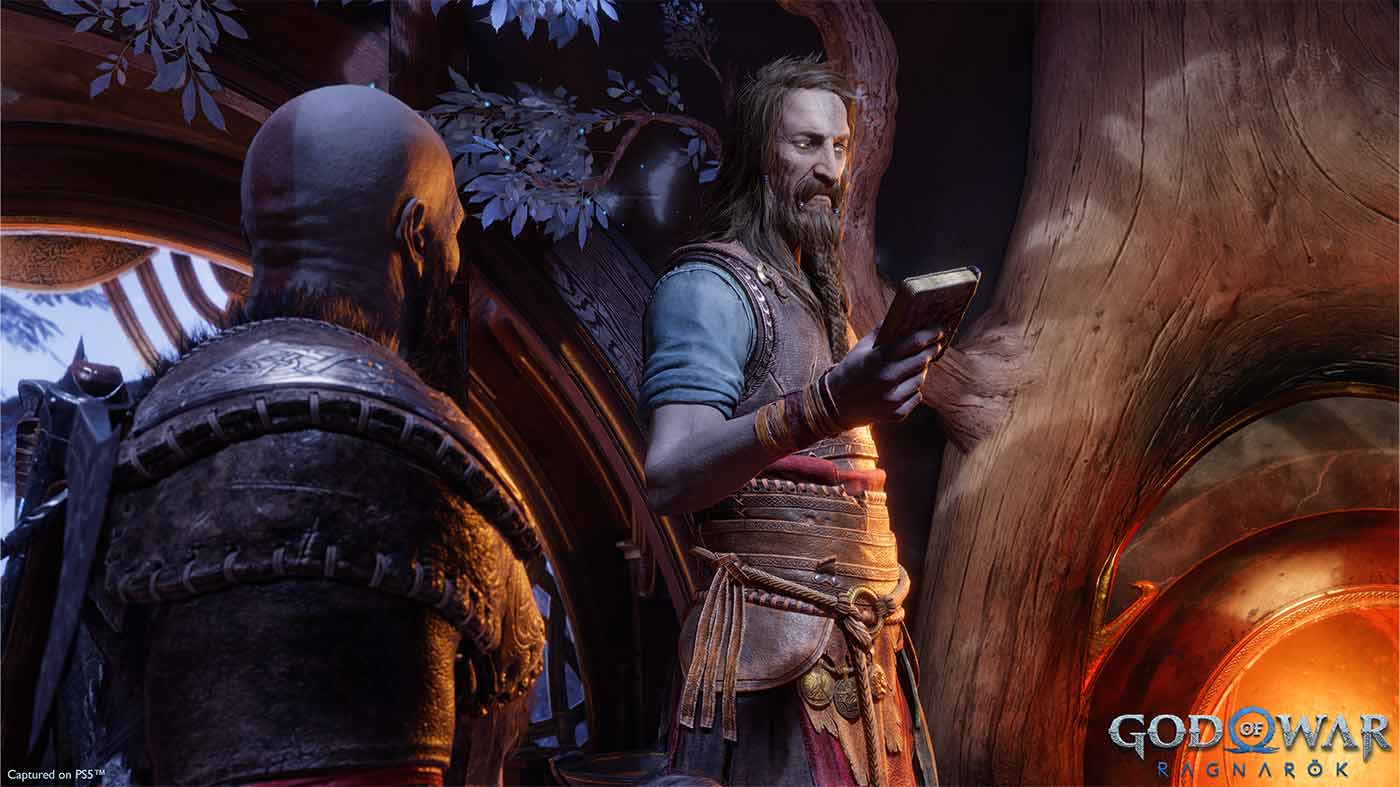
What follows over the next 20-50 hours is a fantasy epic unlike nearly anything I’ve experienced in a video game of this scope and prestige. To touch on even the most innocuous of story beats would be to spoil any number of genuinely memorable moments that continue to mine the depths of a rich cast of characters. As Kratos and Atreus chase myths and mysteries, repair bonds, form new ones, witness larger-than-life events and face impending doom they’re tested at every turn. Whether it’s Kratos’ past and the way it shapes the relationship with his son, Atreus’ teenage angst and desire for autonomy as his entire future is laid out in front of him in prophecy or Freya’s grief turned to hatred after the death of her own son, many of the same themes and ideas from the previous game are further explored here, but just as many new threads and perspectives are woven in.
And perspective is crucial to the tale that this game is trying to tell, something it nails by daring to match Kratos and Atreus up with new and returning faces for portions of its story as both travelling companions and active support in gameplay. Much like Horizon Forbidden West did earlier in the year, God of War Ragnarök enriches its world and cast of diverse beings by giving them all significantly more screen time and a more immediate role in the journey and it’s all the better for it. The mysterious entity behind the camera giving us the game’s single, unbroken shot continues to do the Lord’s work in imparting a sense of scale from the most grand to the most intimate, and the concept is taken to far further and more surprising places than anything from God of War 2018.
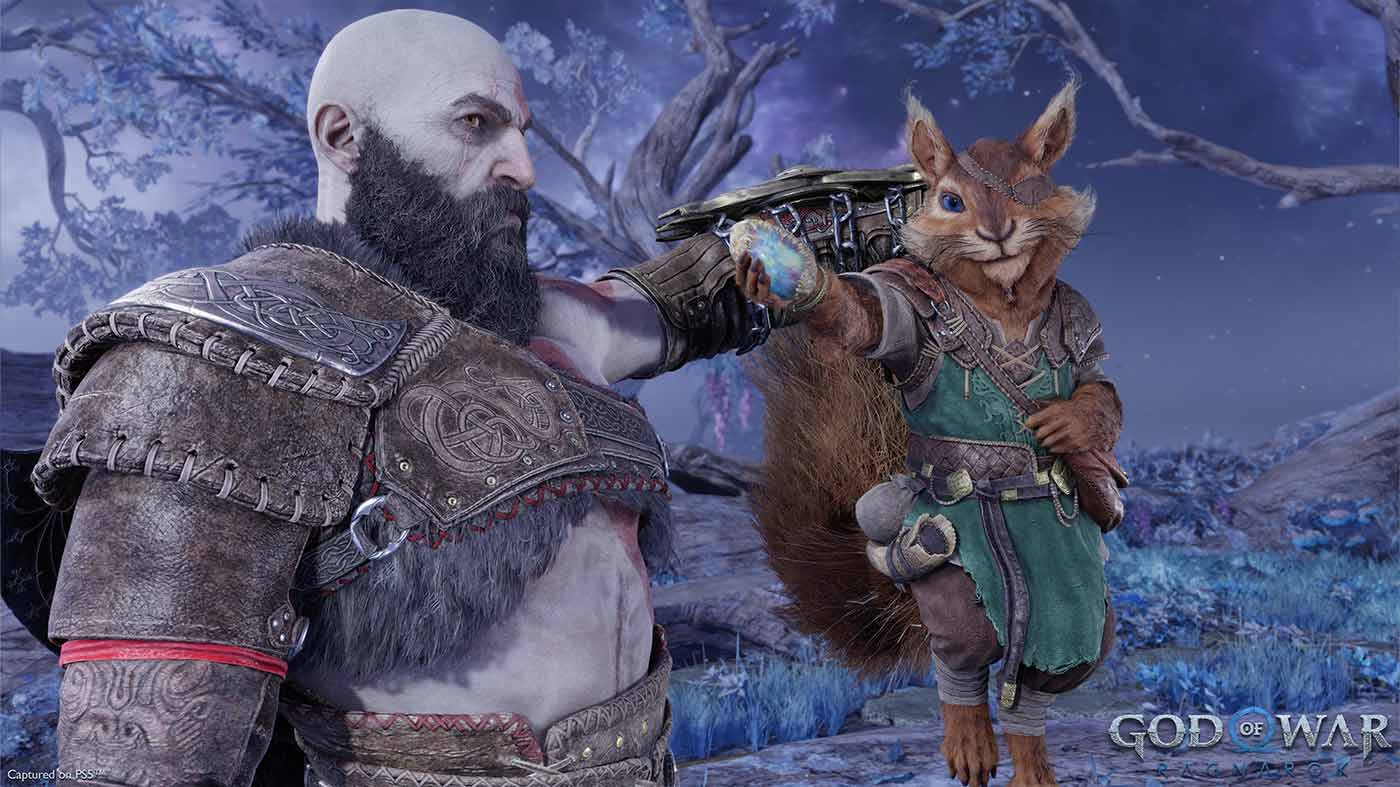
This is a tale of community, of strength, of reconciling with the past and embracing the future, of grief and acceptance and it’s one that couldn’t exist without Kratos but it no longer belongs solely to him. It belongs equally to Freya, the Norse God of War Tyr, the mysterious young giant Angrboda, to Odin, Thor and a huge number of others you haven’t seen yet. And, of course, Atreus. “It takes a village to raise a child” rings true here, with the duo’s found family growing over the course of the game and genuinely supporting each other in a way that feels rare in a video game, no less one so otherwise driven by spectacle. I absolutely would have loved to see some of the new faces here given more time to shine and have their stories and purpose more wholly explored, but I’m confident they’ll be appreciated regardless.
I’m not one for tears, but there were moments that definitely had me on the verge of them – and usually not because of some gut-punching twist or bad fate, but rather seeing these characters tested to their absolute limits and coming out better for it. The growth on display in this cast of well-rounded and surprisingly human-feeling gods and legends is immensely cathartic to witness. It’s a story told with deep respect for its characters, immense creativity, levity and solemnity in equal measure and a desire to inspire wonder in its audience.
We all remember the moment that Kratos takes up the Blades of Chaos again in the previous game, and the powerful concoction of giddy nostalgia and narrative weight that it bore, and Ragnarök does a great job of recapturing some of those feelings. But what’s hugely more impressive and commendable is the boldness with which it creates new feelings, blazes new trails and forges new legends that are just as powerful if not more. There’s so much I can’t and won’t say, but this sequel’s best sequences come from that same place of giving players new tools and mechanics to work with that don’t just add depth to gameplay but add meaning to the world and characters around them, and I think that’s something special.
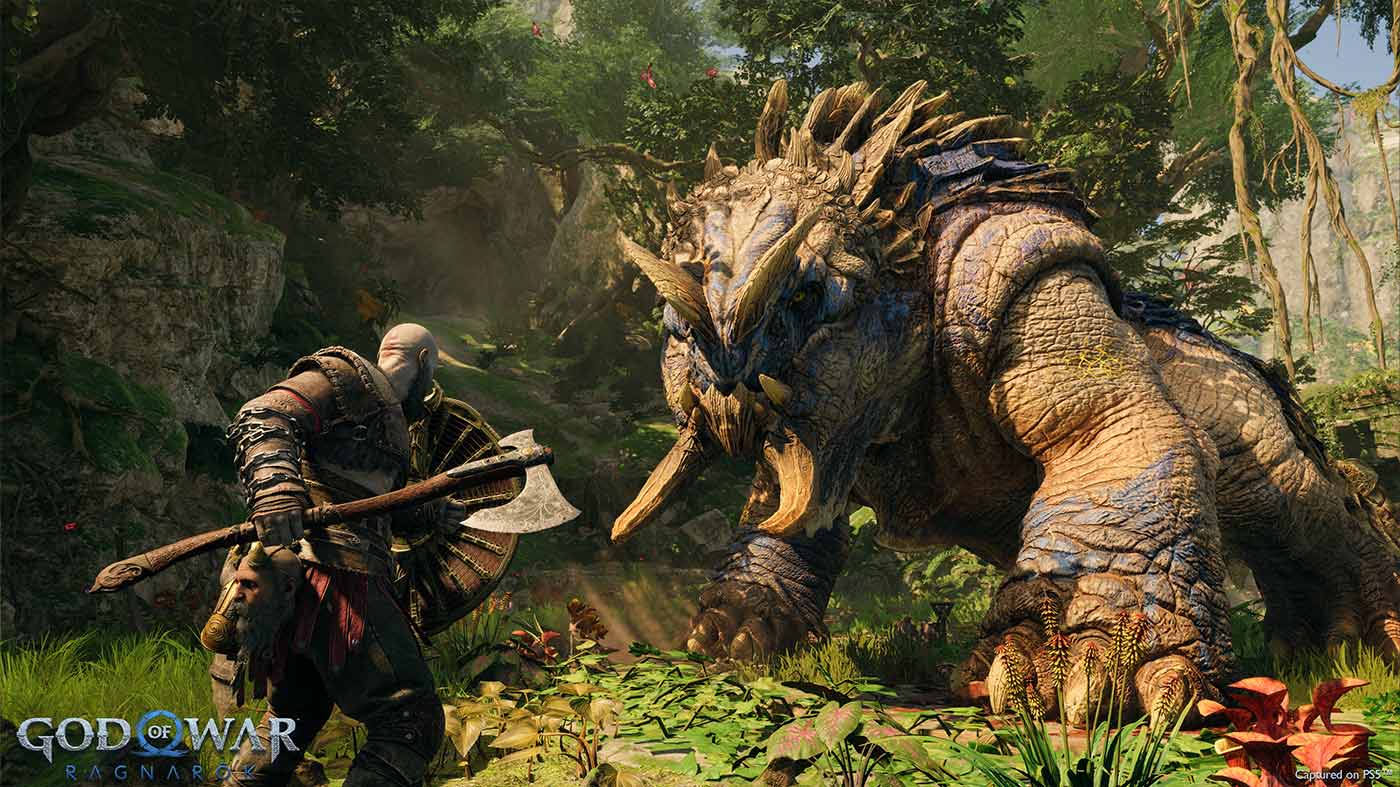
What I can say on the subject of gameplay and that all-important concept of being an angry ex-God of War in a world full of mythical creatures to beat up is that combat in Ragnarök is an improvement on its predecessor in just about every way. I touched on it a little in my preview of the first few hours of the game and it holds true for the rest, there’s a new breadth to combat here afforded by increased verticality, a stronger focus on elemental abilities, better support from partner characters and a massively expanded variety of enemy types. Where things could eventually err towards predictability in God of War 2018, there’s nary an encounter I went into here where I could comfortably say I knew what to expect or how I would handle it.
Everything matters when going toe-to-toe with foes and creatures in Ragnarök , from the individual enemy designs and mechanics to how they’re grouped together and interact, to where you’re fighting them, who’s with you and what gear you’re using and all of these elements are constantly being mixed up in a way that no two fights feel the same. It’s all just as meaty and satisfying as ever, and for those hoping to see more boss battles this time around – there are a heap, and they’re all brilliant. There’s simply never a dull moment, and the pacing of both combat and exploration is aided immensely over the course of the core story content by some very smart, temporary changes in tone and perspective.
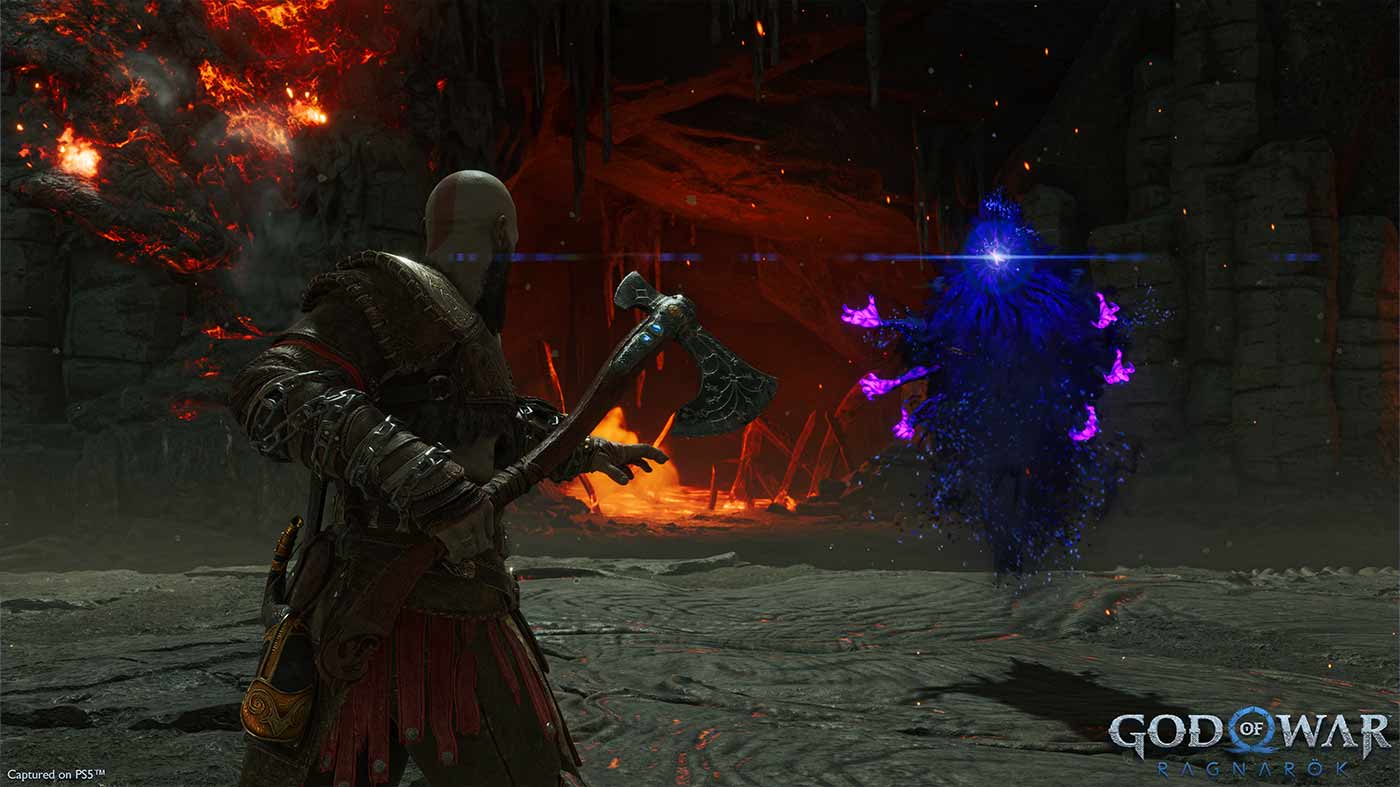
Further variety comes in an expanded arsenal and new tweaks to progression. Where a game like Forbidden West sought to expand its gear game by simply throwing tons of it at the player to its detriment, Ragnarök smartly adds nuance without overwhelming. Both gear and character progression benefit from the expanded elemental mechanics, greater variety of tools and more flexible customisation on offer, making upgrades and changes feel like measured choices that have tangible gameplay impacts. Things like greater variety in Kratos’ shields and how they impact gameplay, or the way that the skills you more frequently use eventually gain special slots to be further augmented with mods, go a long way to making things feel more personal and tailored without radically shaking up the already-excellent combat experience.
The character, equipment and shop menus don’t always do a great job of communicating crucial information, but once I wrapped my head around everything I appreciated the way the game encourages establishing your preferred playstyle early on with specialised gear and then has you tweak and build on it over time.
The allure of new loot and progression is, once again, a great reason to head off the critical path at every given opportunity and God of War Ragnarök continues its predecessor’s penchant for mixing up more linear and directed segments with plenty of opportunities to roam more open spaces within its larger realms. There’s much to admire about the mastery of design on display here. Nine realms all packed with networks of secrets and stories that steadily open up over the course of an otherwise tightly-scripted narrative that weaves in and out of them, a rotating roster of support characters, landscapes that change entire states on a whim, there are a ridiculous number of moving parts that all come together into something that feels precisely curated at every turn.
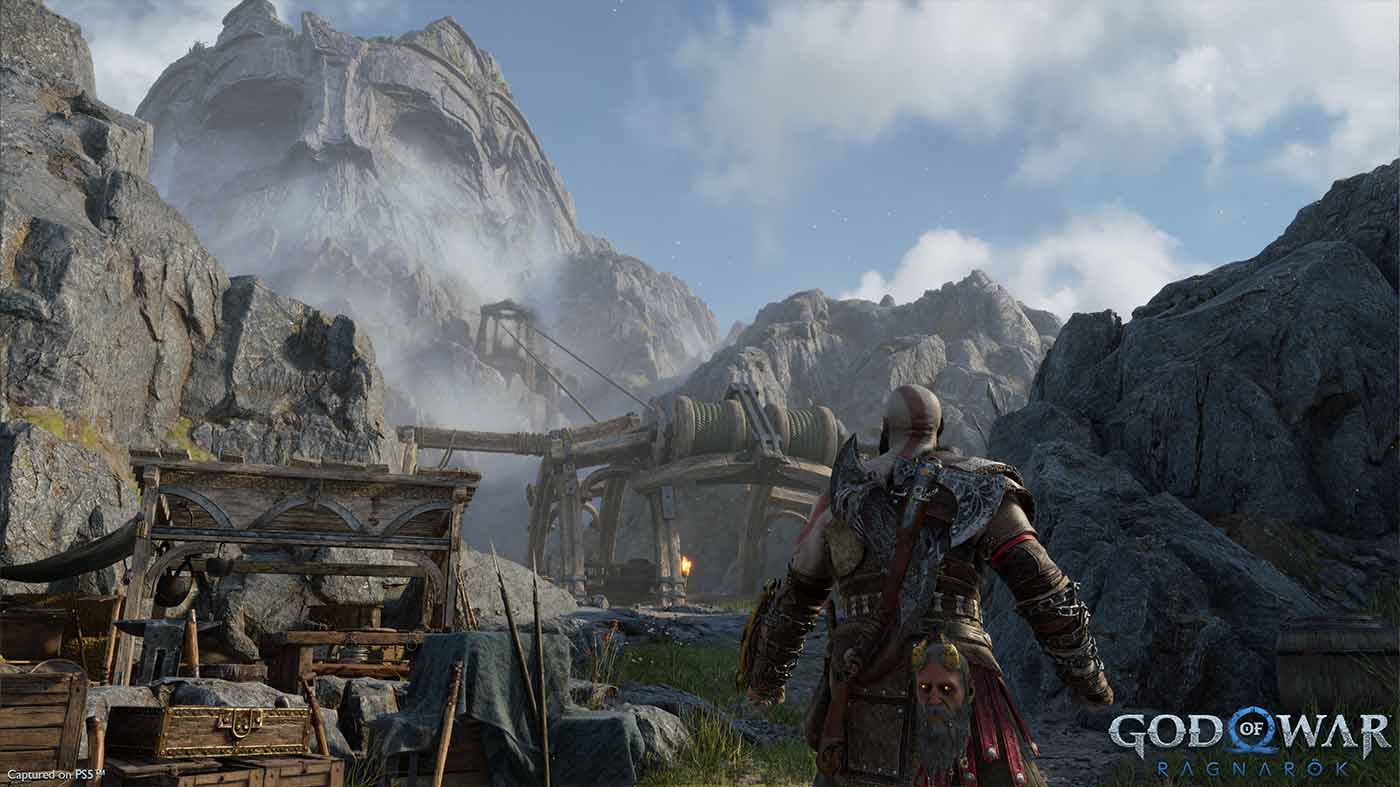
I’m particularly fond of the puzzle design on show in Ragnarök, whether it’s the one-off challenges you find dotted around each locale or the large scale, multi-part environmental puzzles that often reveal themselves further with repeated visits to an area. Kratos’ and Atreus’ expanded repertoires and the new gear they come into along the way are put to great use, and everything is impressively intuitive. There’s nothing you can’t figure out by applying what you’ve come to know about the rules of this universe, and the game is so confident of this fact that the most it does to hold your hand is have other characters naturally react to your progress and offer their own thoughts on the task at present.
Your companions’ quips and musings on the world around them are just as much reason to take every opportunity to explore, in fact. The game’s side quests and content are always narratively interesting, generously rewarding and often unexpected. Even 50 hours in I was seeing things I’d never seen before and getting the impression that my actions were having an impact within these nine realms. Admittedly, because the game’s realms and their gameplay possibilities don’t fully open up until you’re blessed with the full range of gear and abilities, the back half of the game can feel quite overwhelming with content – particularly right towards the end where you’re suddenly handed an enormous and largely optional new area stuffed with lengthy side quests and collectibles that threatens to ruin what is truthfully a bit of a thin climax.
There is a post-game state though, so you’re quite easily able to save the extra challenges and collectibles for when you’re ready to return to the game for your next God of War fix. I would heavily recommend diving right back in once you can as well, a post-game conclusion to one of the game’s most important and emotional moments does more to wrap the whole experience than the slightly shaky scenes before it.
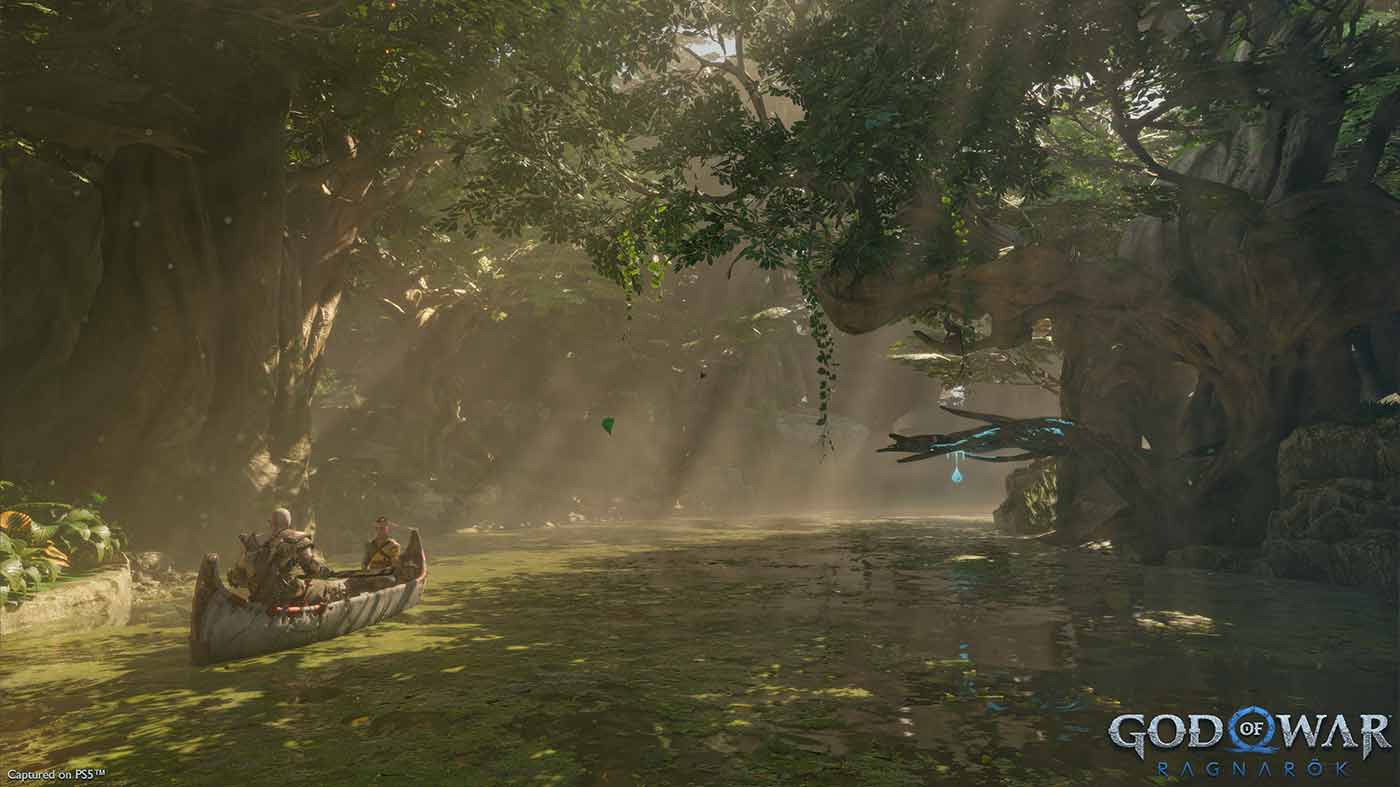
Exploring each of the realms I was also constantly reminded of how strong a sense of place the team at Santa Monica Studio managed to create with the last game. Returning to familiar areas in this sequel, whether intact or completely transformed, immediately opened the gates to a flood of memories of puzzles, boss fights and pivotal scenes – despite my not having gone back to the 2018 game since that very year.
It’s all presented in a fashion more than deserving of its lineage, the trek across these varied and fantastical realms resulting in one of the most breathtaking audiovisual experiences in the medium from both a technical and artistic angle. Nothing in this franchise has come even close to the sense of wonder that permeates Ragnarök. It’s still a grim and violent fantasy, but Santa Monica Studio has packed such a vibrant and imaginative array of stunning landscapes, awesome creatures and magical moments all backed up by a wonderful score by the returning Bear McCreary that rivals some of the best soundtracks cinema has to offer when it comes to elevating the tone and mood of each scene.
You can almost sense Santa Monica directing the game’s every moment from behind this camera, whether you’re in control or not. Cutscenes and set piece moments benefit from masterful camera work with a filmic attention to composition and imagery, and universally phenomenal performances that result in these characters feeling both alive and larger-than-life in equal measure. That’s especially true of the Aesir gods like Odin and Thor, whose depictions in Ragnarök are a great deal of fun. There are scenes here that I can’t wait to talk to people about for either their pure visual splendour, emotional impact or for just being fucking cool – there’s one bar fight scene in particular that’s hands-down one of my favourite video game moments of all time.
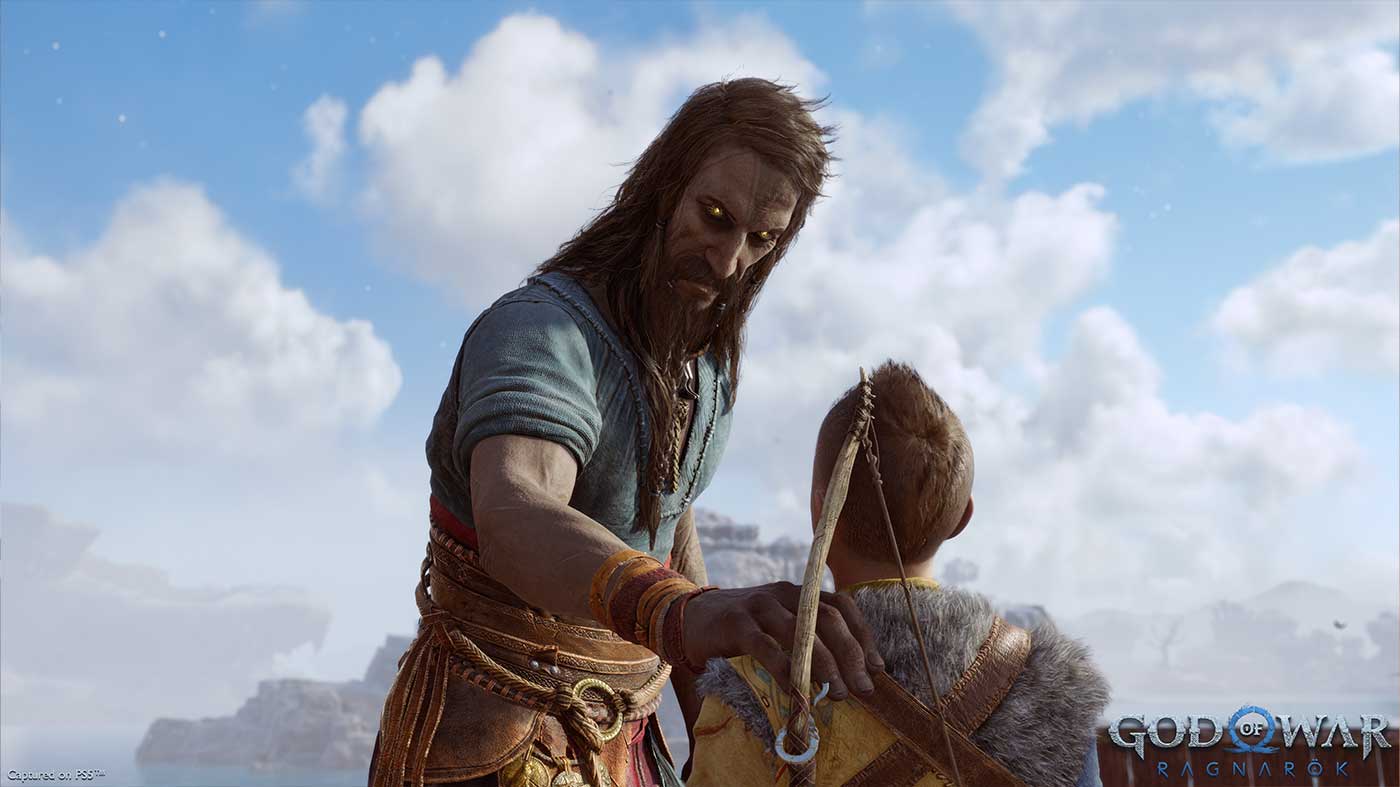
It’s no secret that this is a game built primarily for the franchise’s enormous PS4 audience, with PS5-exclusive features few and far between and mostly confined to the physical realm with the DualSense controller’s haptics and adaptive triggers. The solution instead is art – bereft of buzzword tech like ray tracing, the studio has instead art-ed the shit out of everything it could possibly touch. The new generation edition is blessed with impossibly good-looking character models, lush environments with rich lighting and ridiculously detailed texture work that all adds up to a jaw-dropping presentation. As we explained during the game’s preview phase, there’s a nice amount of choice for PS5 players here in terms of visual/performance modes as well.
I’d be remiss to not once again call out the excellent suite of options on-hand for customising and tailoring the gameplay experience, either purely from a place of personal preference when it comes to how the game feels in the hand or in the name of making it as accessible and approachable as possible to all manner of players. You can read about these more in-depth in a piece we posted here.


